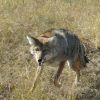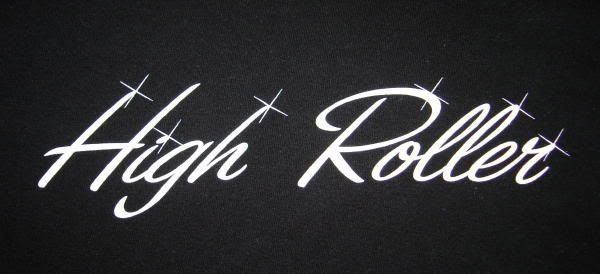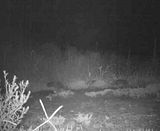Post by Bob Jameson on Aug 14, 2012 6:28:04 GMT -6
Scent dispersal is a factual occurance as we all know.Actual confirmation of distance detection is open for debate.
The initial strength (composition) and mass of the origin material is relative to the potential distance travel of the scent trail plus wind and terrain influences. Then to complicate matters further, the receptive (specie) animals interception and deciphering sense determines the distance the scent can be detected under certain conditions.
Scent molecules and micro particulates attach to various objects and terrain as a sort of hard copy reference to help predatory animals trace the odor origin along with constant support using thermal and wind assistance to confirm their direction of travel. Thus making location of the odor emission an easy acquisition for them in most cases.
I can relate some experiences of mine in lure formulation and material prep work when done outdoors.When grinding skunk pods usually 10 to 15 gal or so annually I set up a grinder outdoors for obvious reasons. My residence and formulation facility are located on a hillside.
I noticed this first scenario many years ago that I am about to describe.
It gave me a good example of scent transmission or scent cone travel as relative to what I was doing.Upon grinding skunk scent pods, glands or aged meats of sorts, after an unknown period of time, I would notice shadows on occasion drifting past me as I was working.
Being occupied I didnt pay alot of attention at first. However as the fleeting shadows became more obvious I took a look around briefly and my search took my glance overhead obviously.
Above, hovering and riding the breeze were several black vultures very low, hovering just above the tree tops.Then they would continue to make passes drifting down wind then they would fly upwind repeatedly and drift back over me. They were so low I could see them looking down and scouring the ground attempting to locate the source of the stink.
I guess they were waiting for the stinky old cuss to kick the bucket for a good meal.The interesting thing is I was set up under a fairly good tree canopy so I wasnt clearly visible to them so they continued to search visually for confirmation of what their sense of smell was telling them.
The point is they had detected and followed that scent trail from who knows how far they had been when the scent trail was first picked up.
Meaning that the scent trail had not only been leaving a low profile signature along the ground terrain but also a scent trail that obviously had been carried high into the wind stream allowing enough of an odor trail to lead them back to a potential meal.
I made several conclusions and assumptions from those early experiences via those birds and other animal testing research. Those early experiences no doubt contributed significantly to my knowledge and understanding of odor release and scent travel which ultimately help me to be a better trapper and lure maker.
Ultimately, odor / scent transmission can be an infinite situation that we may never really know how far and how detectable an element can really be. Alot of variables are present that influence the end result and why they occured as they did. Much food for thought.
The fact remains that the scensory perception abilities of canines and some other creatures are remarkable to say the least. Their odor deciphoring / recognition traits are amazing.
How many levels and degrees of individual odor recognition abilities they possess may never really be known. At least I doubt that technology will be available in our life times to enable us to determine the answers to some of our questions.
Just imagine the possibilities and potential of having such information available.But then we would have to find something else to discuss and share our own theories, experiences and opinions about.
The initial strength (composition) and mass of the origin material is relative to the potential distance travel of the scent trail plus wind and terrain influences. Then to complicate matters further, the receptive (specie) animals interception and deciphering sense determines the distance the scent can be detected under certain conditions.
Scent molecules and micro particulates attach to various objects and terrain as a sort of hard copy reference to help predatory animals trace the odor origin along with constant support using thermal and wind assistance to confirm their direction of travel. Thus making location of the odor emission an easy acquisition for them in most cases.
I can relate some experiences of mine in lure formulation and material prep work when done outdoors.When grinding skunk pods usually 10 to 15 gal or so annually I set up a grinder outdoors for obvious reasons. My residence and formulation facility are located on a hillside.
I noticed this first scenario many years ago that I am about to describe.
It gave me a good example of scent transmission or scent cone travel as relative to what I was doing.Upon grinding skunk scent pods, glands or aged meats of sorts, after an unknown period of time, I would notice shadows on occasion drifting past me as I was working.
Being occupied I didnt pay alot of attention at first. However as the fleeting shadows became more obvious I took a look around briefly and my search took my glance overhead obviously.
Above, hovering and riding the breeze were several black vultures very low, hovering just above the tree tops.Then they would continue to make passes drifting down wind then they would fly upwind repeatedly and drift back over me. They were so low I could see them looking down and scouring the ground attempting to locate the source of the stink.
I guess they were waiting for the stinky old cuss to kick the bucket for a good meal.The interesting thing is I was set up under a fairly good tree canopy so I wasnt clearly visible to them so they continued to search visually for confirmation of what their sense of smell was telling them.
The point is they had detected and followed that scent trail from who knows how far they had been when the scent trail was first picked up.
Meaning that the scent trail had not only been leaving a low profile signature along the ground terrain but also a scent trail that obviously had been carried high into the wind stream allowing enough of an odor trail to lead them back to a potential meal.
I made several conclusions and assumptions from those early experiences via those birds and other animal testing research. Those early experiences no doubt contributed significantly to my knowledge and understanding of odor release and scent travel which ultimately help me to be a better trapper and lure maker.
Ultimately, odor / scent transmission can be an infinite situation that we may never really know how far and how detectable an element can really be. Alot of variables are present that influence the end result and why they occured as they did. Much food for thought.
The fact remains that the scensory perception abilities of canines and some other creatures are remarkable to say the least. Their odor deciphoring / recognition traits are amazing.
How many levels and degrees of individual odor recognition abilities they possess may never really be known. At least I doubt that technology will be available in our life times to enable us to determine the answers to some of our questions.
Just imagine the possibilities and potential of having such information available.But then we would have to find something else to discuss and share our own theories, experiences and opinions about.








